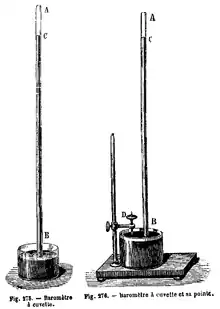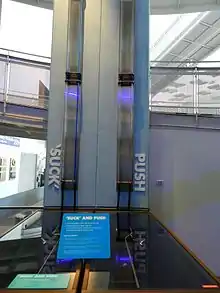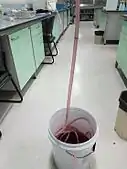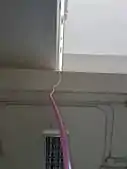Torricelli's experiment
Torricelli's experiment was invented in Pisa in 1643 by the Italian scientist Evangelista Torricelli (1608-1647). The purpose of his experiment is to prove that the source of vacuum comes from atmospheric pressure.[1]


Procedure
The experiment uses a simple barometer to measure the pressure of air, filling it with mercury up until 75% of the tube. Any air bubbles in the tube must be removed by inverting several times. After that, a clean mercury is filled once again until the tube is completely full. The barometer is then placed inverted on the dish full of mercury. This causes the mercury in the tube to fall down until the difference between mercury on the surface and in the tube is about 760 mm.[2] Even when the tube is shaken or tilted, the difference between the surface and in the tube is not affected due to the influence of atmospheric pressure.
Conclusion

Torricelli concluded that the mercury fluid in the tube is aided by the atmospheric pressure that is present on the surface of mercury fluid on the dish. He also stated that the changes of liquid level from day to day are caused by the variation of atmospheric pressure. The empty space in the tube is called the Torricellian vacuum.[3]
1 pascal = 1 Newton per square metre (SI unit) 1 hectapascal is 100 pascals
Additional images
 Water is coloured with potassium permanganate for easy visualization.
Water is coloured with potassium permanganate for easy visualization. Tube from the bucket is pulled up to the third floor of the building and the point where the liquid ceases to rise observed.
Tube from the bucket is pulled up to the third floor of the building and the point where the liquid ceases to rise observed. The photo is taken from upward angle while performing Torricelli's experiment.
The photo is taken from upward angle while performing Torricelli's experiment.
References
- "Torricelli's experiment. Simple barometer". PhysicMax. Retrieved 7 December 2016.
- "Torricelli's experiment". Wolfram. Retrieved 7 December 2016.
- Williams, Richard. "Torricelli Demonstrates the Existence of a Vacuum". APS Physic. Retrieved 7 December 2016.